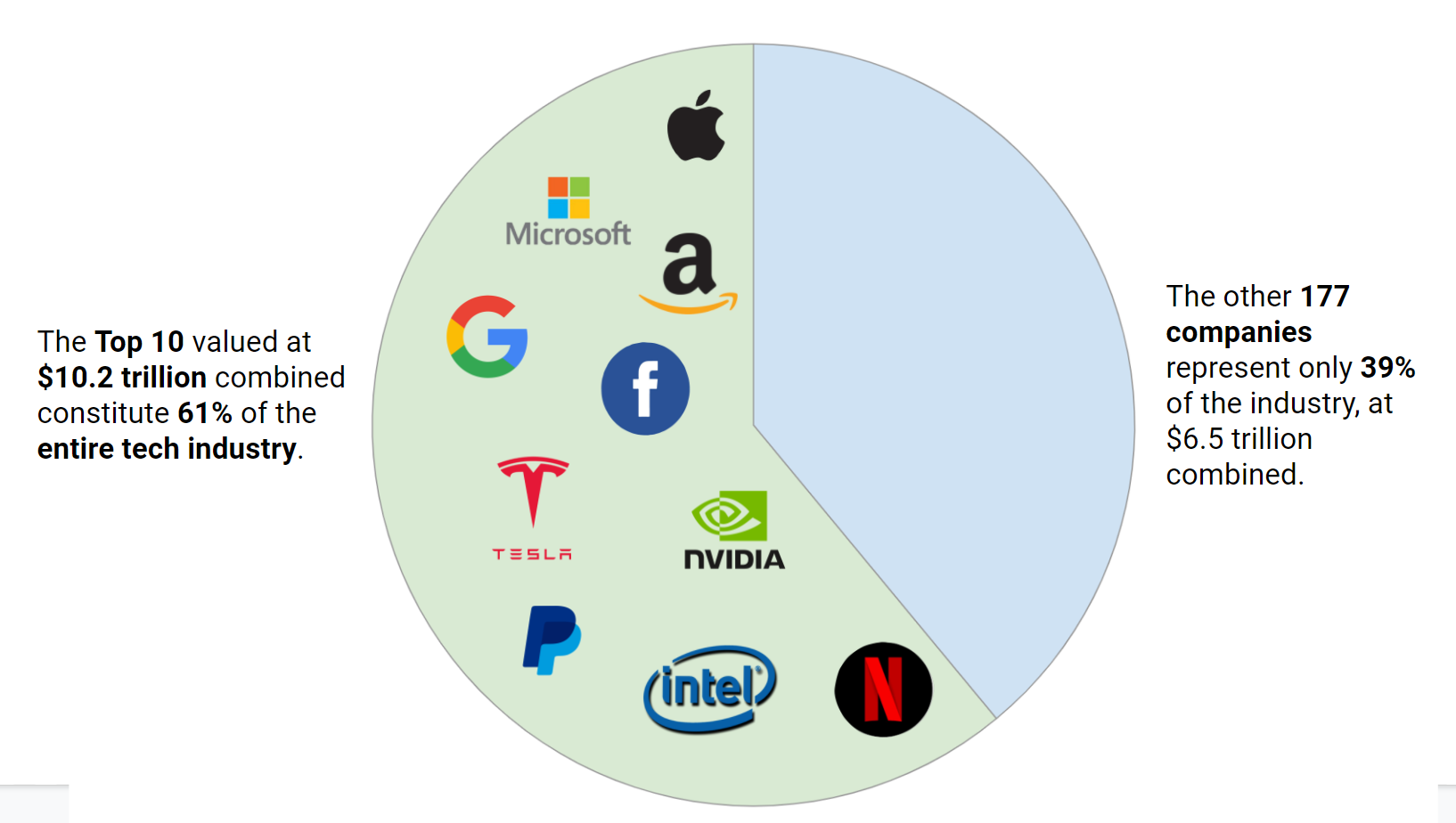Technology has a very wide reach and has become integrated into everyday life for the average American. But who are the people making key decisions that impact millions of people in the country? And do they represent the U.S. population that they serve?
Let’s explore how the tech industry has handled Diversity, Equity, and Inclusion, especially around gender and race.

Current State Assessment of Tech Industry
An assessment of the tech industry today primarily relies upon self-reported data. From 2014 to 2018, representation of most minorities are below their percentages in the U.S. population.
Hover over different tech companies to compare their demographics with the demographics of the U.S. Population. What do you notice?
We can see how Black, Latino and Female groups are disproportionately underrepresented at these tech companies compared to the U.S. population.
Gender Diversity Breakdown
In the previous vizualizations we see the gap between the genders does not significantly improve from 2014 to 2018. Not many gains were made to include and retain women in the tech workforce.
Now, let’s look at the gender balance in top tech companies in 2018. The U.S. Population is very close to the 50:50 gender ratio. How many companies are close to this gender distribution?
As you can see, only a few companies i.e Indiegogo and Pandora were close to the 50:50 gender ratio in 2018. While the rest have a wide gender gap with Nvidia performing the worst.
Racial Diversity Breakdown
Let's now explore the racial diversity. The US population is the benchmark for racial diversity. Which of these companies best represent the US population in racial diversity?
From the above visualization, Amazon appears to be doing well in racial diversity compared to the other companies. However, this is because Amazon includes data about their warehouse workers. This paints an incomplete picture since Black and Latino employees are still heavily underrepresented in their corporate offices.
Top 10 Tech Companies
Now, let's narrow our focus to the top 10 tech companies (by market cap) in the US. These companies are highly sought after by jobseekers and are often trendsetters within the tech industry, often shaping expectations for Diversity, Equity and Inclusion.
Market Landscape
While they are market leaders and have sufficient resources to attract a diverse candidate pool, how well do these companies do in terms of racial and gender diversity?

Gender vs Race Representation at Top 10 Companies
Let’s look at these top 10 companies’ performance balancing racial and gender diversity. Because companies can pad their self-reported data, we used the most recent EEO-1 reports, a standardized form that all companies submit to the federal government, to extract corporate roles only.
Amazon and Tesla have not released this data to the public. For that reason, they are not shown below.
Based on the scatterplot, it looks like Netflix is the closest to the 50/50 “target” for both race and gender diversity. Does this diversity still hold true the higher one climbs up the corporate ladder?
Netflix: A Case Study of the "Best Performing" Tech Company
Let’s dig deeper into the gender and racial distribution across Executive, Manager and Professional roles at Netflix.
Superficially and looking at percentage breakdown alone, Netflix is doing the best for race and gender in total. Yet, as underrepresented individuals progress through their careers, fewer and fewer make it through the ranks. Thus, retention is just as important to consider as hiring.



Diversity Across Different Roles at Netflix
Hover over the arcs to get more information about Netflix’s racial and gender breakdown across these roles. What do you notice?
From aggregate numbers, Netflix seems to have a diverse racial and gender representation. Yet, as underrepresented individuals progress through their careers, fewer and fewer make it through the ranks of manager and executive roles. Thus, retention is just as important to consider as hiring.
Looking to the Future
Everything we’ve seen so far is based on data from 2014 - 2018. What does this mean for the future of tech? Will the top 10 tech companies ever reach gender parity? How long will that take? Let’s look down below.
From the timeline, Netflix is the only top 10 tech company projected to reach gender parity this year. The others will reach gender parity many years later, with Nvidia projected at 2150. Amazon and Tesla were not included because they do not release data. Paypal and Microsoft actually have had negative progress so they would not reach parity...ever.
Recommendations
The timeline above paints a dire picture; however it is still merely a prediction. With the right interventions and practices, perhaps these tech companies can significantly improve hiring and retention of underrepresented groups.
Here are some DE&I efforts taken by Netflix which have significantly helped them hire and retain a diverse workforce consequently creating an inclusive workplace.

What You Can Do to Make a Change
We believe all of us have a role to play in making the tech industry a more inclusive place for all. Uncover how you can help make a positive change in the tech industry.

Push for Corporate Transparency
Encourage your employer and leadership to release the EEO-1 reports to the public. This is the first step in holding your employers accountable and creating transparency.

Be a Diversity Advocate
Educate yourself and speak up when you see unfairness or bias based on gender, race, sexual orientation etc.

Donate
Support and donate to NGOs such as GirlsWhoCode, BlackGirlsCode, Code2040